Why you should give heritage corn a go (and 7 heirloom varieties to try)
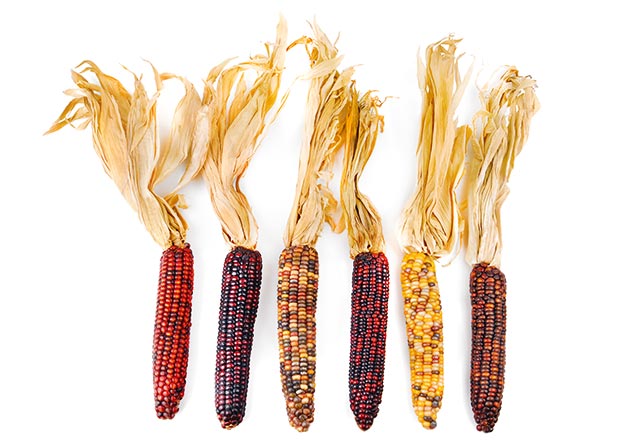
Heirloom varieties are under threat around the world. The more people who grow them, the better.
Words: Jenny Somervell
The popular commercial corn varieties are super-sweet F1 hybrids.
There are a lot of drawbacks for the home gardener with F1 hybrids:
• they are costly to buy;
• they are genetically unstable – you can’t save the seed and grow the same ‘variety’;
• they have reduced genetic diversity;
• they tend to be less adaptable to unfavourable environmental changes.
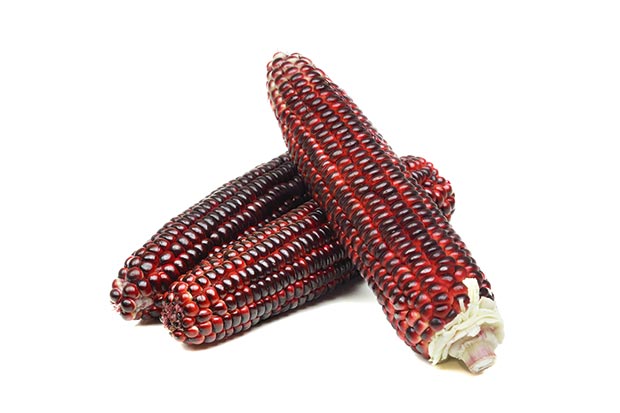
This is why I prefer heritage or heirloom varieties. These plants have been saved for generations, especially in North and South America where corn was a staple food for thousands of years. They are also easily pollinated by the wind.
• Heritage varieties are relatively true to seed so you can save and replant with confidence year to year.
• There are varieties for eating fresh, and for flour-making for bread and tortilla.
• Different varieties tolerate a wider range of conditions, including colder and drier.
• They are less sweet, but have more flavour and higher nutrient values than F1 hybrids, especially the purple, red and blue varieties.
• Colours range from red, white, blue, black, pink, red, purple to green.
• They are not available unless you grow your own.
7 HEIRLOOM VARIETIES OF CORN TO TRY
I recommend trying the following:
The yellows:
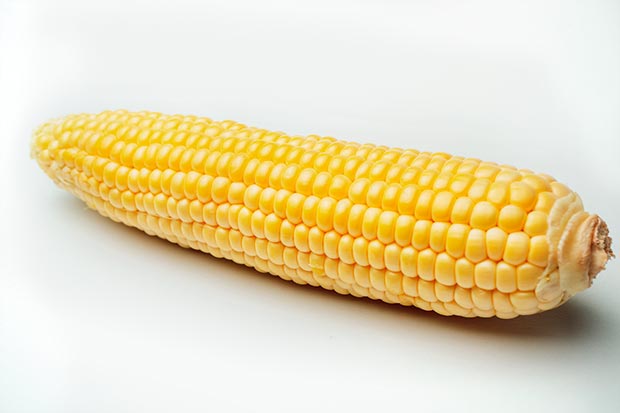
Early Gem
Height: 1.5m
A short season, yellow variety, good for marginal areas. Tasty small cobs, sweeter than other heritage varieties, usually two cobs per plant.
Golden Bantam
Height: 1.5m+
The most reliable yellow variety for home growers. We grow it every year for its real corn flavour with just the right amount of sugar. It is also relatively fast-growing, maturing at 70-80 days.
The coloured sweet/dry:
These can be eaten fresh while still pale in the early milk stage, or dried and ground into nutritious flour when coloured and more mature. The dried cobs are very pretty.
Dried corn grains are used as animal feed. Corn for flour is left on the plant until thoroughly dry and is picked in autumn.
Bloody Butcher
Height: up to 3.5m
An ornamental, traditional Indian corn, which produces large, long cobs of a beautiful rich red colour. In good conditions, plants can get up to 3.5m high. Very nutritious.
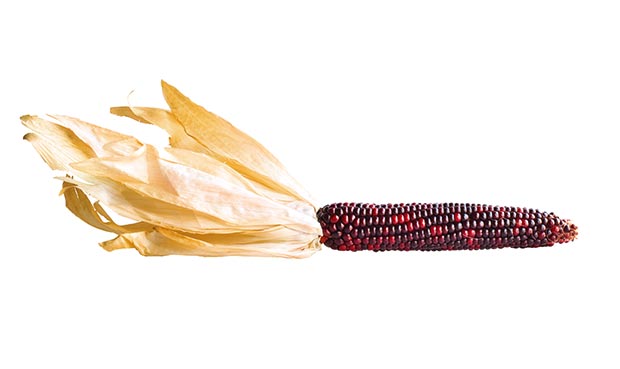
Painted Mountain
Height: 1.5m
US farmer Dave Christenson used over 70 traditional Native American heirlooms to produce this variety to grow in his garden on the cold mountains of Montana. The gorgeous, multi-coloured corn contain significantly more protein, vital amino acids, and levels of antioxidants than most other varieties. It is also an early-maturing, tough, low plant that suits a short growing season.
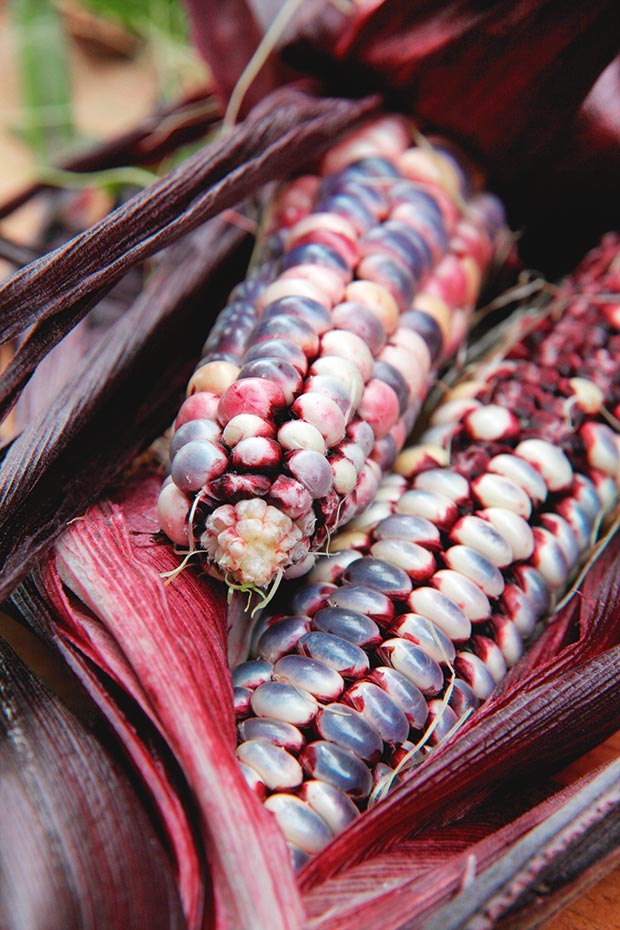
Rainbow Inca
Height: 1.8m+
A sweet, dry, multi-coloured corn with 20cm-long cobs, kernels increase in colour as they mature. Recommended.
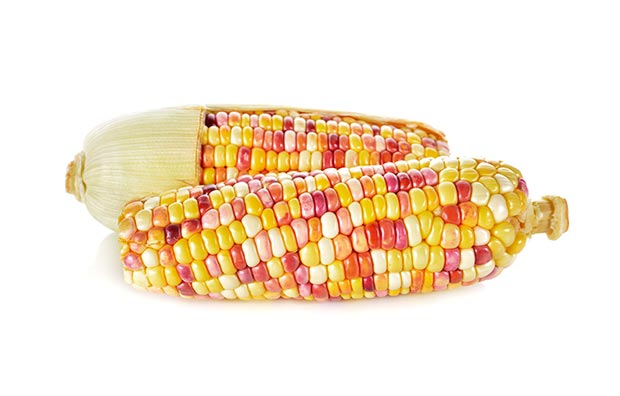
Glass Gem
Height: 1.8m+
A starchy corn that can be popped or ground into flour. It caused a sensation when photos first appeared. The rainbow-colored kernels resemble brilliantly-hued strands of jewels. It was bred by Carl ‘White Eagle’ Barnes, as part of his efforts to retain the cultural identity of his Cherokee ancestors.
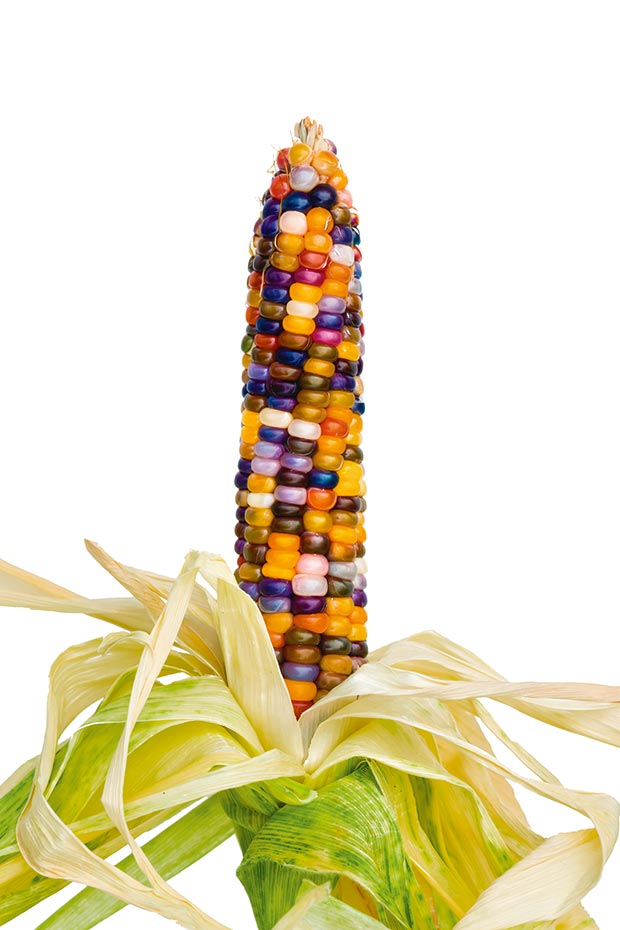
Black Navajo
Height: 2m
A black, sweet, dry corn with smaller cobs. Very nutritious, with a lovely chewy, nutty flavour. Requires slightly longer cooking. Makes great flour.
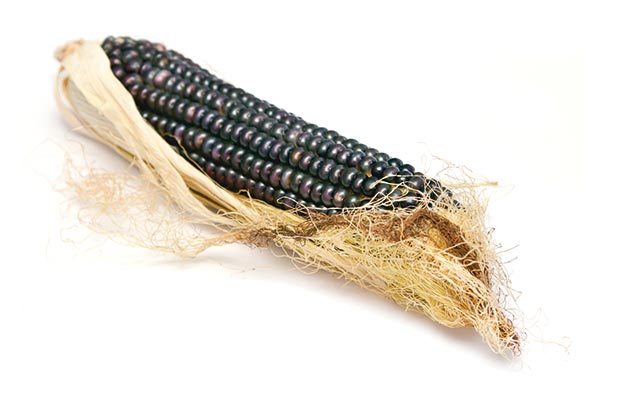
CORN’S FAVOURITE COMPANIONS
Native Americans planted the three sisters – corn, bean and squash – as companions:
• the corn as structure for the climbing beans;
• the beans for nitrogen from their roots;
• the squash as a living mulch, conserving moisture, suppressing weeds and pests.
HOW TO DO IT
This works best when you have (or create) a rich soil. Give the corn plants a head start. Seedlings need to be about 15cm high before you plant out climbing bean seedlings at the base of the corn and between the rows. One or two squash plants will fill in the gaps.

I plant lettuce between young corn seedlings.
Once the harvest is finished, the plant material can be dug back into the soil.
Love this story? Subscribe now!
 This article first appeared in NZ Lifestyle Block Magazine.
This article first appeared in NZ Lifestyle Block Magazine.
